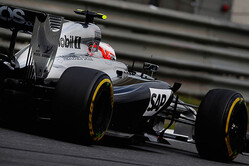- Home
-
News
-
Latest News
- Domenicali "excited" for the future
- Vasseur underestimated the challenge Hamilton faced
- Verstappen didn't agree with Lawson decision
- Mercedes and Red Bull power units under scrutiny
- "We're on the eve of something very special."
- Verstappen to race with number 3
- F1 2026... everything you need to know
- Pirelli reveals compounds for first three races of 2026
- Portugal returns to the F1 calendar
- More News
-
-
Drivers
-
Current Drivers
- Max Verstappen
- Lando Norris
- Gabriel Bortoleto
- Isack Hadjar
- Pierre Gasly
- Andrea Kimi Antonelli
- Fernando Alonso
- Charles Leclerc
- Lance Stroll
- Yuki Tsunoda
- Alexander Albon
- Nico Hulkenberg
- Liam Lawson
- Esteban Ocon
- Franco Colapinto
- Lewis Hamilton
- Carlos Sainz
- George Russell
- Oscar Piastri
- Oliver Bearman
- Test/Reserve Drivers
-
- Teams
-
Tracks
-
Current Circuits
- Melbourne (Australia)
- Shanghai (China)
- Suzuka (Japan)
- Sakhir (Bahrain)
- Jeddah (Saudi Arabia)
- Miami (USA)
- Imola (Italy)
- Monte Carlo (Monaco)
- Barcelona (Spain)
- Montreal (Canada)
- Red Bull Ring (Austria)
- Silverstone (UK)
- Spa-Francorchamps (Belgium)
- Budapest (Hungary)
- Zandvoort (Netherlands)
- Monza (Italy)
- Baku (Azerbaijan)
- Singapore (Singapore)
- Austin (USA)
- Mexico City (Mexico)
- Interlagos (Brazil)
- Las Vegas (USA)
- Losail (Qatar)
- Abu Dhabi (UAE)
-
- Seasons
-
Pictures
-
Latest Galleries
- 2025 Abu Dhabi Post-Season Test 9 Dec
- 2025 Abu Dhabi GP
- 2025 Abu Dhabi Saturday
- 2025 Abu Dhabi Practice
- 2025 Qatar GP
- 2025 Qatar Saturday
- 2025 Qatar Practice
- 2025 Las Vegas GP
- 2025 Las Vegas Saturday
- 2025 Las Vegas Practice
-
Gallery Categories
- 2025 Season
- 2024 Season
- 2023 Season
- All galleries
-
- Stats
- JOHNNYBET






















sign in